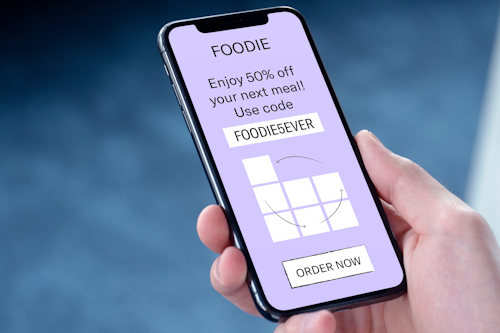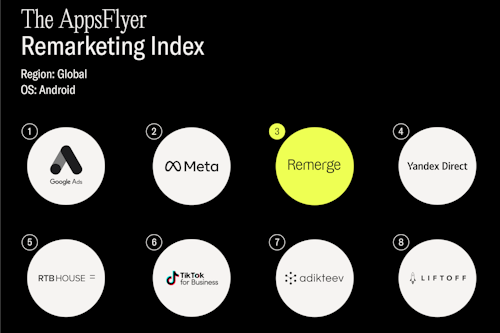App retargeting: What marketers can do in the privacy-first era
octubre 31, 2023

Following the announcement of Apple’s privacy changes last year, the market perception was that mobile retargeting — where advertisers show users personalized ads to encourage them to reinstall an app, re-engage with it or make a purchase — would quickly die out.
However, based on what we’ve seen at Remerge since the arrival of the App Tracking Transparency (ATT) framework, the reality has not been as bleak. App marketers can still run high-performing retargeting campaigns on Android and for iOS users who have opted-in to tracking.
In The state of app retargeting report, we evaluate why retargeting remains a viable option when growing an app audience in the privacy-first era. The report includes some of our performance data and features insights from mobile marketing experts across North America, Asia, and Europe.
Take advantage of ID inventory to re-engage users
Although the volume of available ID traffic on iOS has dropped by around 35% (90% before ATT and 54% today), the portion of identifiable users is still large enough to run effective retargeting campaigns. As it stands, more than half of the inventory on iOS still has an IDFA - which is almost 40 billion bid requests per day. App marketers are taking advantage of this opportunity to maximize their lifetime value (LTV) and increase revenues by re-engaging high-value users.
Continue running in-app retargeting campaigns
At Remerge, we’ve enhanced our programmatic platform and hit all-time company highs for several performance metrics in 2021. As a result, our company’s retargeting revenues grew month-over-month following the launch of ATT (May, June, July, August).
Despite the arrival of ATT, we delivered 33% more ad clicks and recorded a 25% jump in re-engagements (unique app opens) for all of our retargeting campaigns combined.

Prepare for the no-ID future
Now is the ideal time for app marketers to collect more data and insights about their users’ behavior and interests. This type of information will lay the foundations for optimizing app growth campaigns on no-ID traffic (i.e. SKAdNetwork and incrementality campaigns).
The sooner app marketers start running retargeting campaigns, the more data points they will acquire about their audiences, such as which other apps they have downloaded or at whattime of the day they make purchases. This data allows algorithms (and people) to learn which publishers and campaign setups will yield the best performance results.
« In-app retargeting remains a key strategy in continuing to engage users who play our games »
Mandy Lin, User Acquisition Executive, Gumi
Rethink your mobile marketing strategies
Apple’s privacy changes may not have had the devastating impact many expected, but it has forced app marketers to revisit their mobile marketing strategies.
We asked some of our clients why they are investing in retargeting after the launch of ATT and what advice they would give to those deciding whether to run these types of campaigns on Android and iOS.
Access the full analysis in The state of app retargeting.
Mandy Lin, User Acquisition Executive, Gumi
“In-app retargeting remains a key strategy in continuing to engage users who play our games. Within the mobile gaming industry, increased competition has made it more difficult to retain users, and so in-app retargeting is very helpful in making sure we continue to engage our users beyond the point of install.”
Victor Hernandez, Senior Mobile Performance, Manager, User Acquisition & Retargeting, Just Eat Takeaway.com
App retargeting is changing as there is now less ad personalization and less accuracy. But it’s still possible and you will miss out on a huge opportunity if you don’t engage with your existing customers.”
More insights on in-app retargeting
Access all of the insights on the state of app retargeting in our new report.





